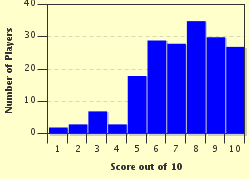Quiz Answer Key and Fun Facts
1. Let's start our vacation with a trip to romantic France. The hauntingly beautiful cathedral of Notre Dame de Paris is central to Victor Hugo's 1831 classic "The Hunchback of Notre Dame". The Cathedral was built on an island in the middle of the Seine River. What is the name of this urban Paris island?
2. A wonderful experience would be to retrace the footsteps of Heinrich Harrer from India to Tibet as told loving in his "Seven Years in Tibet". Once in Tibet you make your way to the capital city of Lhasa and can visit what imposing palace where the Dalai Lamas ruled?
3. Arthur Conan Doyle plunged Sherlock Holmes and his archrival Professor Moriarty from the top of the Reichenbach Falls in the 1893 story "The Final Problem". To pay your respects to the great detective, you would travel to the city of Meiringen in what European country?
4. The beauty and tranquility of the Gion District in this former capital city of Japan features prominently in the 1997 bestseller "Memories of a Geisha". In what city on the island of Honshu can you still glimpse the wondrous art of the geisha?
5. Perhaps you are interested in catching a big fish and want to tackle the giant marlin that so plagued Santiago in Ernest Hemingway's 1951 "The Old Man and the Sea". If you want, you can start your fishing trip on the same island as the book's "Old Man". What is the name of this large Caribbean Island?
6. A popular destination for tourists seeking to follow the trail of great literature is the Anne Frank House. Here you can visit the "Secret Annex" where 13-year-old Anne Frank hid from the NAZI's for two years and wrote what became the haunting "Diary of Anne Frank". In what European capital city can you find the house at 267 Prinsengracht?
7. As a child, you may have dreamed of running away and escaping reality on a raft just as the young Tom Sawyer did in Mark Twain's 1876 novel "The Adventures of Tom Sawyer". Like Tom, you would find yourself floating along what mighty North American river, which travels through cities such as St. Louis and Memphis?
8. The vast continent of Asia is fertile ground for literary places to visit. For example, 1956's prescient "The Quiet American" by Graham Greene recalls the colonial glory of Vietnam's Ho Chi Minh City on the brink of historic change. What is the former name of Ho Chi Minh City?
9. Perhaps you are enthralled with the exotic lure of India? "Beneath the Marble Sky" is a modern classic of empire, love and the building of the Taj Mahal. To see the Taj Mahal, you must travel to the city of Agra in Northern India. When construction of the Taj Mahal was started in 1631, Agra was the capital of what great empire?
10. For many their first sense of Australia comes from literature and media. Add the spice of an unsolved mystery and you get exotic fiction like Joan Lindsay's 1967 "Picnic at Hanging Rock". Hanging Rock is a real volcanic formation near Melbourne. In what mountain range, named for the region of Greece where Alexander the Great was born, can you visit Hanging Rock?
Source: Author
adam36
This quiz was reviewed by FunTrivia editor
Tizzabelle before going online.
Any errors found in FunTrivia content are routinely corrected through our feedback system.

